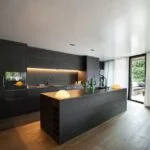Are you wondering how to decorate a home daycare? Creating a visually appealing and stimulating environment for children is not only essential for their development but also beneficial for the caregiver. In this article, we will discuss the impact of a well-decorated home daycare on children’s growth and learning, as well as provide practical tips and ideas for creating a nurturing and inviting space.
A well-decorated home daycare plays a crucial role in influencing children’s overall development. The use of bright colors, cheerful patterns, and organized spaces can stimulate creativity, encourage learning, and promote a sense of safety and belonging.
Additionally, the ambiance of the daycare can significantly affect the mood and behavior of the children in care. As such, creating an aesthetically pleasing environment is beneficial not only for the children but also for the caregiver’s overall experience in running a home daycare.
Throughout this article, we will explore various aspects of decorating a home daycare, including childproofing and furniture arrangement, colorful walls and decor, functional storage solutions, comfortable nap and play areas, educational wall displays and learning centers, personalizing the space with personal touches. And we will also provide practical tips for maintaining a well-decorated home daycare on an ongoing basis.
By implementing these ideas and suggestions into your home daycare setting, you can create a nurturing environment where children can thrive while fostering their curiosity and love for learning.
Safety First
As the saying goes, safety should always come first, especially in a home daycare setting where children spend a significant amount of their time. Childproofing the space is essential to creating a safe environment for little ones to explore and play.
This includes securing furniture to the walls to prevent tipping, covering electrical outlets, and removing any small objects that could pose a choking hazard. Caregivers should also consider installing safety gates at the top and bottom of stairs, padding sharp corners of furniture, and locking cabinets that contain cleaning supplies or other potentially harmful items.
In addition to childproofing, caregivers should pay attention to furniture arrangement to optimize the use of space while creating designated areas for different activities. It’s important to strike a balance between having enough open space for children to move around freely and providing cozy nooks for quieter activities like reading or playing with puzzles. By arranging furniture thoughtfully, caregivers can create an environment that allows for both active play and quiet relaxation.
When positioning furniture, it’s also important to consider the line of sight from various parts of the room. Caregivers need to be able to keep an eye on all the children in their care at all times, so ensuring visibility throughout the space is key. Careful consideration of furniture placement can help make supervision easier while providing an environment that promotes safety and security for all children in the home daycare.
Ultimately, childproofing and thoughtful furniture arrangement are crucial elements in creating a safe and functional space for a home daycare. By taking these measures seriously, caregivers can provide peace of mind not only for themselves but also for the parents who trust them with their precious little ones each day.
Colorful Walls and Decor
When it comes to decorating a home daycare, creating a stimulating environment is key to fostering creativity and learning in children. Bright colors and cheerful patterns can have a significant impact on a child’s development, helping to stimulate their senses and encourage curiosity. By incorporating colorful walls and decor into the space, caregivers can create a visually appealing environment that supports the growth and learning of the children in their care.
One way to enhance the visual appeal of a home daycare is by choosing paint colors that are vibrant and inviting. Shades of yellow, blue, green, and red are popular choices for daycare settings as they are known to promote feelings of happiness, calmness, and energy among children. In addition to paint, wall decals with educational themes or playful designs can be used to add personality and engage children’s imagination.
It’s important to keep in mind that while bright colors can be visually stimulating, they should be balanced with areas of calmness and simplicity in the decor. Incorporating neutral tones or soft pastel hues in certain areas can provide a sense of balance in the overall environment. Similarly, using natural light to illuminate the space can help create an inviting atmosphere for children to thrive in.
Incorporating decor that encourages learning and exploration is also essential in creating a stimulating environment. From educational posters featuring letters and numbers to interactive displays showcasing nature or science themes, these elements can capture the attention of young minds while providing opportunities for educational engagement. By combining these decorative elements with colorful walls, caregivers can create a space that inspires curiosity, imagination, and continuous learning for the children under their care.
Functional and Fun Storage Solutions
When decorating a home daycare, it is essential to prioritize functional and fun storage solutions to keep the space organized and conducive to a positive learning environment. Proper storage not only helps in keeping toys, books, and art supplies accessible but also teaches children about independence and responsibility.
One of the most important aspects of storage in a home daycare is to ensure that everything has a designated place, making it easier for both the caregiver and the children to maintain order.
There are various recommendations for storage solutions that can be implemented in a home daycare setting. These include using open shelves for easy access to toys and materials, as well as clear bins for small items such as building blocks or art supplies.
Labels on the storage containers can help children learn about organization and where things belong. Additionally, incorporating child-friendly furniture with built-in storage options, such as benches with hidden compartments or ottomans with removable lids, can provide both functionality and comfort.
Another element of creating functional and fun storage solutions is to involve children in the organization process. Encouraging them to participate in tidying up after activities by returning items to their designated places fosters a sense of responsibility. Making the labeling colorful and interactive can make it engaging for young children, turning organization into an enjoyable learning experience.
In summary, implementing effective storage solutions in a home daycare setting is crucial for maintaining order, accessibility, and instilling important life skills in children. By making organization fun through creative labeling and involving children in the process, caregivers can contribute greatly to creating an environment that encourages independence while keeping materials accessible for everyday use.
| Storage Solutions | Description |
|---|---|
| Open shelves | Provide easy access to toys and materials |
| Clear bins | For small items such as building blocks or art supplies |
| Child-friendly furniture with built-in storage options | Provides functionality and comfort while storing items |
Cozy and Comfortable Nap and Play Areas
Creating a cozy and comfortable nap and play area is essential for a well-decorated home daycare. This section will provide tips and suggestions on how to design these spaces to ensure that children feel relaxed and at ease during their naptime and playtime.
Tips for Creating a Comfortable Nap Area
When designing the nap area in a home daycare, it’s important to prioritize the children’s comfort and safety. One of the key elements is providing child-sized cots or mats, which are easy to clean and maintain. Cozy blankets, soft pillows, and comforting stuffed animals can also help create a peaceful environment for naptime. Additionally, incorporating blackout curtains or shades can help darken the room for better sleep.
Suggestions for Playtime Areas
For playtime, it’s important to create an inviting space where children can engage in various activities comfortably. Soft area rugs can define the play area while providing a cushioned surface for playing. Including floor cushions or plush seating options can also encourage relaxation and creativity during playtime. It’s essential to have designated areas for different activities such as reading, building with blocks, or engaging in dramatic play.
Incorporating Sensory Elements
Consider adding sensory elements to both the nap and play areas of the home daycare. Soft textures, soothing music, and gentle lighting can contribute to a calming atmosphere during naptime while stimulating materials like kinetic sand, water tables, or textured toys can enhance sensory experiences during playtime.
By carefully considering these factors when creating cozy and comfortable nap and play areas in a home daycare setting, caregivers can ensure that children have a nurturing environment where they can thrive both physically and emotionally.
Educational Wall Displays and Learning Centers
Creating an environment in a home daycare that promotes learning and development is essential for the children’s growth. Educational wall displays and learning centers play a crucial role in fulfilling this purpose. Here are some ideas and tips to help you create engaging and interactive spaces for the children in your home daycare:
– **Educational Wall Displays:** Consider incorporating educational posters, charts, and displays on the walls of your daycare. Items like a calendar, weather chart, alphabet posters, number charts, and world map can serve as valuable tools for teaching and sparking curiosity. These displays can also provide visual stimulation and encourage children to ask questions and explore new concepts.
– **Learning Centers:** Set up designated areas in your home daycare for different activities such as sensory play, art, science experiments, reading nooks, and pretend play. Each learning center should be equipped with age-appropriate materials and toys that promote hands-on learning experiences. Organizing these areas not only helps children find items easily but also encourages them to independently engage in various activities.
– **Interactive Elements:** Incorporate interactive elements into your educational displays and learning centers. For example, create a “word wall” where you add new words or vocabulary that the children learn each week. Additionally, consider rotating materials or props to keep the learning centers fresh and exciting.
By creating engaging educational wall displays and setting up diverse learning centers within your home daycare, you can foster an environment that encourages exploration, creativity, and cognitive development among the children under your care. These spaces will not only support their early years’ education but also make learning an enjoyable experience.
Personalizing the Space
Creating a personalized and homey environment is essential in making a home daycare feel warm and inviting for both the children and the caregiver. Adding personal touches to the space not only creates a sense of belonging but also helps in fostering a nurturing atmosphere. Here are some suggestions for adding personal touches to your home daycare:
- Family Photos: Displaying family photos on a dedicated wall or shelf can help the children feel connected to their caregivers and create a sense of familiarity in the new environment.
- Children’s Art: Encouraging the children to create art that can be displayed around the daycare adds a personal touch to the space. This also allows them to take pride in their work and showcase their creativity.
- Homemade Decorations: Consider creating homemade decorations with the children, such as paper garlands or painted rocks, to add a unique and personal flair to the decor.
Involving the children in the decoration process not only adds personalized elements but also fosters a sense of ownership and responsibility among them. Allowing them to help choose decorations, rearrange items, or even water plants can make them feel like valuable contributors to the space and develop a sense of pride in their environment.
Personalizing the space is an important aspect of creating a nurturing and inviting home daycare environment that feels like a second home for both children and caregivers.
Practical Tips for Maintaining a Well-Decorated Home Daycare
Maintaining a well-decorated home daycare involves more than just keeping the space clean and organized. It also requires making sure that the decorations and furnishings are durable and easy to maintain for long-term use. One practical tip for maintaining a well-decorated home daycare is to opt for furniture and decor that can withstand wear and tear. Choose items made from sturdy, easy-to-clean materials that can endure frequent use by children.
Another practical tip is to establish a daily cleaning routine to keep the space tidy. Encourage children to participate in simple tasks like putting away toys, wiping down surfaces, and organizing their belongings. By involving the children in the cleanup process, it teaches them responsibility and helps instill good habits at an early age.
Regularly inspecting the space for any wear and tear, damage, or safety hazards is also crucial for maintaining a well-decorated home daycare. Check furniture, toys, and decorative items for any signs of damage or deterioration. Address any issues promptly to ensure the safety and functionality of the space.
These practical tips for maintaining a well-decorated home daycare not only contribute to creating a visually appealing environment but also promote safety, organization, and responsibility among both the children and caregiver.
| Practical Tips | Maintaining a Well-Decorated Home Daycare |
|---|---|
| Choose durable furniture | Establish daily cleaning routine |
| Inspect space regularly | Address issues promptly |
Conclusion
In conclusion, creating a well-decorated home daycare is not just about making the space visually appealing, but also about providing a nurturing and inviting environment for children to thrive in. By implementing safety measures, colorful decorations, functional storage solutions, comfortable nap and play areas, educational displays, and personal touches, caregivers can create a space that promotes learning, creativity, and independence.
It is essential to prioritize the safety and comfort of the children while also stimulating their development through thoughtful decoration.
Furthermore, involving the children in the decoration process can instill a sense of ownership and belonging in the space. By including personal touches such as family photos and children’s art, caregivers can create a warm and welcoming atmosphere that feels like a home away from home for the little ones in their care.
Additionally, maintaining a well-decorated home daycare requires consistent effort in keeping the space clean and organized while ensuring that decorations and furnishings are durable for long-term use.
Ultimately, a well-decorated home daycare is an investment in the well-being of both the children and the caregiver. The effort put into creating an aesthetically pleasing, safe, and comfortable environment will not only benefit the development of the children but also contribute to a fulfilling and nurturing experience for everyone involved. By following these guidelines for decorating a home daycare, caregivers can provide an enriching space where children can learn, grow, play, and feel truly at home.
Frequently Asked Questions
How Can I Decorate My Daycare?
Decorating a daycare can be a fun and creative process. Consider using bright and cheerful colors to create a welcoming atmosphere for the children. Add educational and age-appropriate artwork, posters, and decorations to stimulate learning and creativity.
Use child-sized furniture, soft rugs, and comfortable seating areas to make the space cozy and inviting. Don’t forget to incorporate storage solutions for toys, books, and art supplies to keep the daycare organized while still being accessible.
How Do I Organize My Home Daycare?
Organizing a home daycare is essential for creating a safe and efficient environment for both children and caregivers. Start by establishing designated areas for playtime, naptime, meals, and learning activities. Use labels on bins or shelves to indicate where toys, books, and supplies are stored.
Create a daily schedule that includes time for structured activities as well as free play. Implement clear rules and expectations for behavior so that children understand what is expected of them while in your care.
How Do I Make My Daycare Stand Out?
Making your daycare stand out involves finding ways to set it apart from other childcare options in your area. Consider offering unique or specialized programs such as language immersion classes or nature-based activities. Emphasize your qualifications or certifications as a caregiver or any special skills you have that could benefit the children in your care.
Maintain open communication with parents and provide regular updates on their child’s progress or activities throughout the day. Creating a warm, nurturing environment where children feel valued and supported can also help your daycare stand out from others in the community.

I’m thrilled to be your companion on this exciting journey through the world of home decor and design. With a passion for turning houses into homes and a keen eye for the finer details, I’m here to help you transform your living spaces into beautiful, functional, and meaningful havens.





